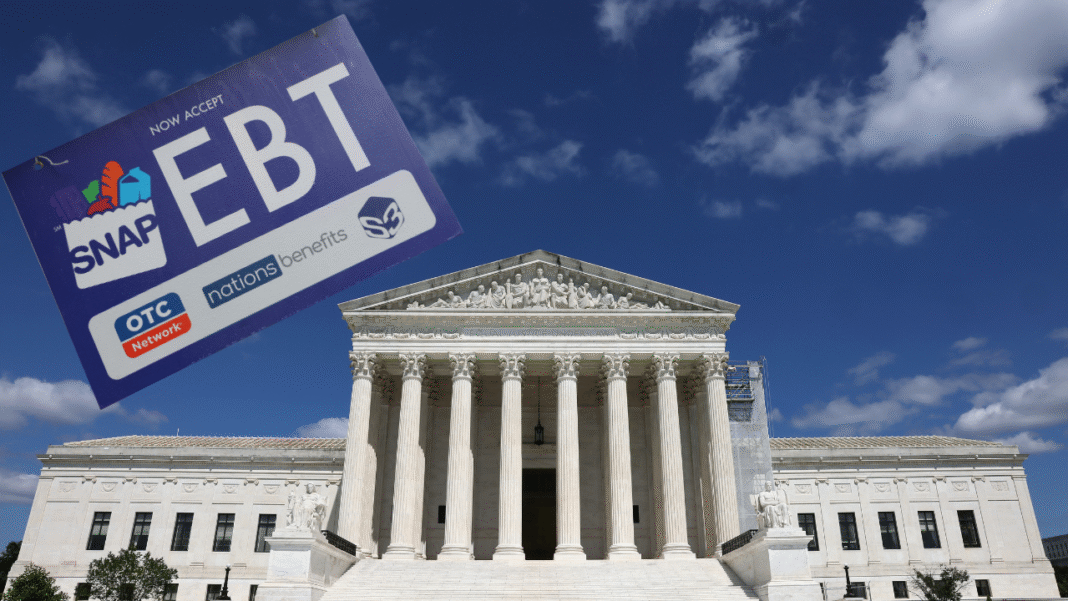Supreme Court Extends Stay on SNAP Benefits Amid Ongoing Government Shutdown
On Tuesday, the Supreme Court made headlines by extending an administrative stay until Thursday regarding a lower court decision that mandated the Trump administration to provide full Supplemental Nutrition Assistance Program (SNAP) payments during the current government shutdown. This move affects approximately 42 million Americans who rely on these assistance payments, adding to the challenges faced by families already struggling with food insecurity.
The Situation at Hand
The extension does not dismiss the legal merits of the case but rather places a two-day pause on full SNAP payments. During this time, Congress is in the midst of negotiations, with the Senate passing a bill aimed at reopening the government. However, this deal requires the House’s approval, which is set to reconvene after a six-week hiatus. The ongoing shutdown has left many federal workers without pay and disrupted services, adding strain on the effectiveness of safety net programs designed to aid vulnerable populations.
Implications for SNAP Recipients
According to the advocacy group Code for America, nearly 27 million SNAP recipients were scheduled to receive their benefits on Monday, only to find their payments stalled due to the administrative stay. For households already navigating financial difficulties, delays in these benefits can translate into significant hardship, making it increasingly challenging to secure adequate nutrition for their families.
A Divided Court
Justice Ketanji Brown Jackson was notable in her dissent against the majority ruling. On November 7, she issued an administrative stay to provide the First Circuit Court more time to evaluate the Justice Department’s appeal. Her decision highlights the complexities and urgency of the situation, as she voted for the immediate resumption of full payments—a stance that contrasts with the majority’s decision. However, neither Justice Jackson nor her counterparts provided detailed reasoning behind their choices, leaving many unanswered questions about the legal rationale at play.
The Justice Department’s Position
In a statement, the Justice Department criticized the First Circuit’s ruling, indicating that injecting federal courts into the decision-making process regarding resource allocation was not a feasible solution for ending the shutdown. “The only way to end this crisis,” they argued, “is for Congress to reopen the government.” This sentiment underscores a growing frustration within the executive branch as both sides of the aisle engage in political maneuvering during a prolonged stalemate.
Legislative Developments
The Senate has proposed a bill that not only aims to reopen the government but also restore SNAP payments. The catch, however, involves increased subsidies under the Affordable Care Act (ACA), which may complicate garnering support in the House. As lawmakers weigh their options, the plight of SNAP recipients remains a pressing issue that could influence the legislative process.
Broader Effects of the Shutdown
As the shutdown stretches into its 42nd day, the ripple effects are becoming more apparent. Federal employees remain without pay, SNAP beneficiaries are either receiving partial or no benefits, and the logistics of air travel have been severely impacted. Flight delays and cancellations have become commonplace, further complicating the lives of everyday citizens.
Legal Background
Initially, the Trump administration sought to halt SNAP payments altogether for the month of November, arguing that a lapse in funding jeopardized the program’s existence. This led to a lawsuit filed by states, cities, private organizations, and individual SNAP recipients, which contended that the administration’s actions violated legal obligations to support those in need. U.S. District Judge John McConnell ruled in favor of these challenges, ordering that a $5 billion SNAP contingency fund be utilized to continue payments—a decision that sparked the current legal back-and-forth.
Urgency of Action
The organizations that initiated the lawsuit have made a compelling case for urgency, emphasizing that many families have now gone ten days without necessary food assistance. In their brief, they warned that any further delays would result in irreparable harm and chaos in the administration of SNAP benefits. The lack of a solid justification for these delays from the government presents an increasingly morally challenging landscape, as countless families find themselves at risk of food insecurity.
In light of these factors, the ongoing dialogue about SNAP and the responsibilities of the government to its citizens intensifies. As the clock ticks down on the Supreme Court’s stay, all eyes are on Capitol Hill and the potential consequences for millions of Americans in desperate need of assistance.



